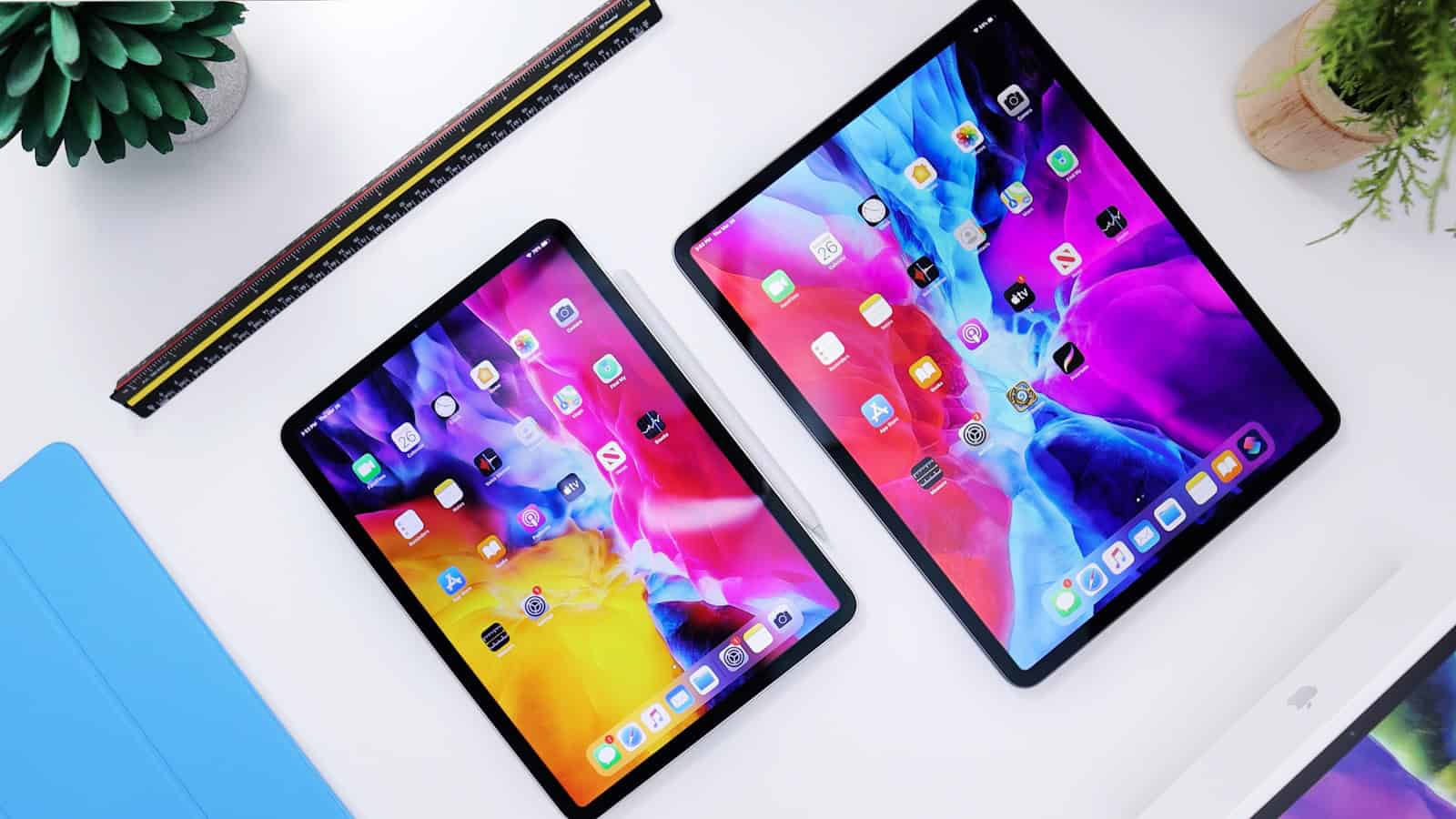Apple’s line of iPads has evolved significantly since the introduction of the first iPad in 2010. These tablet devices have changed the way people work, learn, and play, offering diverse features and designs across multiple generations. Each new iteration brings advancements in technology, providing users with more power, better graphics, and increased portability. From the original iPad to the latest models, the evolution of Apple’s iPads mirrors the rapid pace of innovation in personal computing.
As the iPad lineup grows, it includes various models such as the iPad, iPad Air, iPad mini, and iPad Pro, each catering to different user needs. The iPad Pro, for example, offers top-tier performance and features suitable for professional use, while the iPad mini provides a compact size for those prioritizing portability. Understanding the differences between each generation and model helps consumers make informed decisions when selecting the iPad that best fits their lifestyle and requirements.
A Timeline of iPad Innovation: From the Original to the Cutting Edge
First Generation (2010): The Tablet Pioneer
The original iPad was a groundbreaking device that sparked the tablet revolution. It boasted a 9.7-inch display, an A4 chip, and ran on iOS. The iPad’s intuitive interface and app ecosystem quickly made it a popular choice for both consumers and professionals.
Second Generation (2011): Slimmer and Faster
The second-generation iPad saw a significant performance boost with the introduction of the A5 chip. It also became thinner and lighter, making it even more portable.
Third Generation (2012): The Retina Display Era
The third-generation iPad marked a major leap forward in display technology with the introduction of the Retina display. This high-resolution screen offered stunning visuals and quickly became a standard feature for future iPads.
Fourth Generation (2012): Lightning Strikes
The fourth-generation iPad saw a relatively minor update, with the most notable change being the introduction of the Lightning connector. This new connector was smaller and more durable than the previous 30-pin connector.
iPad Mini (2012): The Compact Companion
The iPad Mini was introduced as a smaller and more affordable alternative to the full-sized iPad. It featured a 7.9-inch display and was designed for portability.
iPad Air (2013): Thin and Light Redefined
The iPad Air brought a new level of thinness and lightness to the iPad lineup. It also featured the powerful A7 chip, making it one of the fastest tablets on the market.
iPad Mini 2 (2013): Retina Display Arrives
The iPad Mini 2 followed in the footsteps of the full-sized iPad by adopting the Retina display. This made the smaller iPad even more appealing for those who wanted a compact device with a high-resolution screen.
iPad Air 2 (2014): Even Thinner, Even Faster
The iPad Air 2 continued the trend of making iPads thinner and lighter. It also introduced the A8X chip, which offered a significant performance boost over the previous generation.
iPad Mini 3 (2014): Touch ID Added
The iPad Mini 3 saw a minor update with the addition of Touch ID. This fingerprint sensor added an extra layer of security and convenience to the iPad Mini.
iPad Pro (2015): A New Powerhouse
The iPad Pro marked a major shift in Apple’s tablet strategy. It featured a larger 12.9-inch display, a powerful A9X chip, and support for the Apple Pencil. The iPad Pro was designed to be a productivity powerhouse, competing with laptops in terms of performance and capabilities.
iPad Mini 4 (2015): The Final Mini (for now)
The iPad Mini 4 was the last update to the iPad Mini line before it was discontinued. It featured a thinner design and a faster A8 chip.
iPad Pro 9.7-inch (2016): Smaller Pro, Big Performance
The 9.7-inch iPad Pro offered a smaller alternative to the 12.9-inch model while still maintaining its powerful performance. It also introduced the True Tone display, which adjusted the screen’s color temperature based on ambient lighting.
Fifth Generation (2017): The Budget-Friendly Option
The fifth-generation iPad was a more affordable option that replaced the iPad Air 2. It featured the A9 chip and a slightly thicker design.
iPad Pro (2017): 10.5-inch and 12.9-inch
Apple updated the iPad Pro lineup with new 10.5-inch and 12.9-inch models. These models featured the A10X Fusion chip, ProMotion technology for smoother scrolling, and improved cameras.
Sixth Generation (2018): Pencil Support for All
The sixth-generation iPad replaced the fifth-generation model and added support for the Apple Pencil. This made the Apple Pencil accessible to a wider audience and further blurred the lines between tablets and laptops.
iPad Pro (2018): Face ID and USB-C
The 2018 iPad Pro models introduced Face ID and replaced the Lightning connector with USB-C. These changes made the iPad Pro even more powerful and versatile.
iPad Air (2019): The Return of a Fan Favorite
The iPad Air made a comeback in 2019 with a new design and the A12 Bionic chip. It offered a balance of performance and affordability, making it a popular choice for many users.
iPad Mini (2019): Mini Revival
The iPad Mini was revived in 2019 with a new design, a faster A12 Bionic chip, and support for the Apple Pencil.
Seventh Generation (2019): Bigger Screen, Same Price
The seventh-generation iPad replaced the sixth-generation model and featured a larger 10.2-inch display. It also offered support for the Smart Keyboard.
iPad Pro (2020): LiDAR and Trackpad Support
The 2020 iPad Pro models introduced a LiDAR scanner for improved augmented reality experiences and added support for trackpads. This further enhanced the iPad Pro’s productivity capabilities.
iPad Air (2020): A14 Bionic and USB-C
The fourth-generation iPad Air saw a major redesign with a new all-screen design and the A14 Bionic chip. It also replaced the Lightning connector with USB-C.
iPad (2020): A12 Bionic and Improved Performance
The eighth-generation iPad replaced the seventh-generation model and featured the A12 Bionic chip. This offered a significant performance boost over the previous generation.
iPad Pro (2021): M1 Chip and Mini-LED Display
The 2021 iPad Pro models marked a major leap forward in performance with the introduction of the M1 chip. The 12.9-inch model also featured a Mini-LED display for improved contrast and brightness.
iPad Mini (2021): A15 Bionic and USB-C
The sixth-generation iPad Mini saw a major redesign with a new all-screen design and the A15 Bionic chip. It also replaced the Lightning connector with USB-C.
iPad Air (2022): M1 Chip and 5G
The fifth-generation iPad Air received the M1 chip and optional 5G connectivity, further blurring the lines between tablets and laptops.
iPad (2022): A14 Bionic and Center Stage
The ninth-generation iPad replaced the eighth-generation model and featured the A14 Bionic chip. It also introduced Center Stage, a feature that keeps you centered in the frame during video calls.
iPad Pro (2022): M2 Chip and Hover for Apple Pencil
The 2022 iPad Pro models took performance to new heights with the introduction of the M2 chip. They also introduced a unique hover feature for the Apple Pencil, enhancing creativity and precision.
iPad Pro (2024): M4 Chip
Released in May 2024, the iPad Pro with the M4 chip pushed the boundaries of performance even further. It offered faster speeds and improved efficiency, making it ideal for demanding tasks like video editing and 3D modeling.
iPad Air (2024): M2 Chip
The 2024 iPad Air got a significant upgrade with the M2 chip. It also gained a larger display, making it an even more compelling option for those seeking a balance of power and portability.
| Generation | Year | Display Size | Chip | Notable Features |
|---|---|---|---|---|
| 1st | 2010 | 9.7 inches | A4 | First iPad |
| 2nd | 2011 | 9.7 inches | A5 | Thinner and lighter |
| 3rd | 2012 | 9.7 inches | A5X | Retina display |
| 4th | 2012 | 9.7 inches | A6X | Lightning connector |
| iPad Mini | 2012 | 7.9 inches | A5 | First iPad Mini |
| iPad Air | 2013 | 9.7 inches | A7 | Thinner and lighter |
| iPad Mini 2 | 2013 | 7.9 inches | A7 | Retina display |
| iPad Air 2 | 2014 | 9.7 inches | A8X | Touch ID |
| iPad Mini 3 | 2014 | 7.9 inches | A7 | Touch ID |
| iPad Pro | 2015 | 12.9 inches | A9X | First iPad Pro, Apple Pencil support |
| iPad Pro | 2024 | 11 & 12.9 inches | M4 | Faster performance |
| iPad Air | 2024 | 11 & 13 inches | M2 | Larger display |
This table is not exhaustive. Many more models have been released since 2015, and each offers unique features and capabilities.
Key Takeaways
- Apple’s iPads have continually advanced since the first model was released.
- There are distinct iPad models aimed at different markets and uses.
- Knowing the features of each iPad generation aids in choosing the right device.
iPad Generations Overview
Apple has consistently updated its iPad models, integrating new features and designs. Here, you can see how the iPad has changed over time, learn about distinct iPad lines, and discover the technologies that make each model stand out.
The Evolution of iPad Models
From the original iPad launched in 2010, Apple has released several generations, each improving on the last. For example, the iPad (8th generation) arrived in 2020 with the A12 Bionic chip, offering more power than its predecessor, the iPad (7th generation). This trend continued with the iPad (9th generation), enhancing both performance and user experience.
Specialized iPad Lines
Alongside the standard iPads, there are specialized lines like the iPad Mini, iPad Air, and iPad Pro. Each serves a different audience. The iPad Mini is compact, while the iPad Air offers a balance between features and portability. The iPad Pro is the most powerful, appealing to professionals who need high-end capabilities.
Key Features and Technologies
Apple incorporates a mix of features and technologies across its iPad models. iPads have seen advancements in cameras, processors, and security. For instance, newer iPad Pros come equipped with a 12MP rear camera, Face ID, and the M1 chip, signifying significant jumps in processing power and security compared to earlier models.
Design and Display Innovations
Apple has transitioned from LCD screens to the more advanced Retina, Liquid Retina, and Liquid Retina XDR displays, offering high pixel density and stunning visuals. The iPad Pro models also support ProMotion technology, delivering a smoother and more responsive experience.
Connectivity and Accessories
Connectivity options have evolved, with recent models featuring Wi-Fi 6 and USB-C ports. Accessories like the Apple Pencil and Smart Keyboard expand the functionality of iPads, transforming them into tools suitable for diverse tasks. These accessories connect easily thanks to the Smart Connector on many Pro models and the magnetic attachment for the Apple Pencil.
Each iPad generation builds on the last, bringing forth new technologies and improvements to meet users’ needs. Whether for casual use or professional work, there is an iPad designed to fit the task. With this overview, users can make informed choices guided by the subtle and significant differences among the iPad generations.







